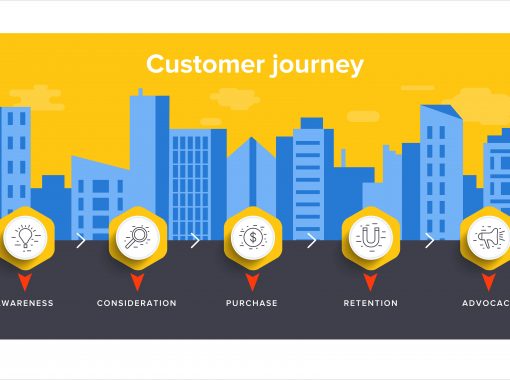
How Brands Use Blogs to Power Conversion Marketing
Every marketer strives for content that persuades readers to convert. But crafting compelling blogs that create real business impact takes strategic planning. This post explores how blogs can be used to engage audiences and catalyze conversion marketing, from building email lists to boosting sales. займ без отказа. I’ll highlight examples that B2B and B2C brands can use across three key phases: attracting visitors, encouraging action, and driving conversions.
What Is Conversion Marketing?
Conversion marketing is any marketing strategy that’s designed to increase your conversion rate. A simple example is an email campaign that promotes an offer with the goal of having the recipient click a link in the email to redeem the offer.
What Is a Blog Conversion?
In essence, a blog conversion is when a visitor takes a desired action after reading a blog post.
The conversion may be signing up for a newsletter, downloading a gated resource, requesting a demo, making a purchase, or any other calls to action.
Tracking your blog conversions reveals how content contributes to business goals like generating leads, sales, and revenue.
How Do Blogs Factor Into Conversion Marketing?
Overall, blogs support conversion marketing by attracting qualified traffic, engaging visitors with useful content, and prompting desired actions through strategic calls to action. Well-optimized blogs bring in relevant visitors from search and social media. Compelling content keeps them engaged on the site. CTAs tied to business goals convert readers into leads and customers.
Before considering the important elements of each blog post to support your conversion marketing strategy, you need to understand the stages of the marketing funnel.
Crafting Blogs for Each Stage of the Marketing Funnel
Every customer journey begins at the Top of the Funnel (TOFU). It’s there when awareness is born; where the seeds of interest take root.
At this stage, writing content that educates, sparks curiosity, and pulls in your target audience is key. For a fashion retailer, this could mean penning a blog about ” The Latest Bathing Suit Trends for Men.” It’s a broad topic but tied to your audience’s curiosity to help gain valuable web traffic.
The Middle of Funnel (MOFU) phase is for readers eager to learn more. Those visitors are past casual browsing and are seeking valuable, decisive information to help them make a choice on a product or service.
The same fashion retailer may publish “The Ultimate Guide to Choosing Lightweight Summer Scarves.” This engages prospects by offering practical advice tailored to a specific product and subtly introduces items from its collection.
When the reader is on the precipice of decision-making, at the Bottom of the Funnel (BOFU), a solid vote of confidence can seal the deal. Craft stories showing your product in action.
Testimonials, compelling success stories, or a piece about “Finding Your Signature Summer Look with our Scarves” would satisfy readers’ expectations. The fashion retailer is positioned as a trusted ally, promising to transform customers’ wardrobe for the season.
Mirror your readers’ mindset at every phase of their journey. Reflect on their curiosity, echo their questions, and assure them of the best answer: you. An ever-evolving blog, custom-tailored for each stage, is a powerful conversion marketing tool.
Once you’ve determined the stage of the marketing funnel your content will support, consider the tips below to attract, engage, and finally convert your audience.
Attract: Bring in Your Target Audience
Driving qualified traffic is step one for conversions. Without visitors, your content is a tree falling in an empty forest.
Multi-channel promotion of blogs helps reach new audiences. Retargeting engages past visitors. Let’s look at some ways you can start attracting your target audience:
Optimize for Organic Search
Improving on-page elements, such as title tags, meta descriptions, headers, image alt text, etc, helps pages rank higher for relevant queries. This brings more target audience members to your desired pages. The more relevant eyeballs on your content, the more leads and sales become possible.
Here are a few optimization elements that boost conversions:
- Focus on topics directly aligned with your solutions so that the content matches the searcher’s intent.
- Build links from other authoritative sites to boost domain authority and SERP rankings.
- Research competitors’ top-performing content and identify gaps to create better resources.
Promote Content Across Channels
Promoting blogs on social media expands your reach outside of SERPs (but can positively impact your traffic and rank). Casting a wider net increases visitor numbers, and more visitors means growing the top of your conversion funnel.
Integrated efforts let you capture interest in multiple spaces. For example:
- Share blogs on social media channels where your audience is active.
- Highlight new posts in email nurture streams and newsletters.
- Retarget engaged visitors with ads reminding them of the value of your content.
- Repurpose blog posts into LinkedIn articles, podcast interviews, and guest posts to expand reach.
Analyze Performance and Optimize
Analyzing metrics identifies your best-converting content, which can inform your content strategy and future topic ideation. Reviewing metrics consistently is vital to maintaining a performance-driven content strategy.
Here are some tips for continually improving your blog-powered conversion marketing strategy:
- Track traffic sources, engagement metrics, and conversions by blog post.
- Double down on promotion for high-performing content.
- Identify weak points like low click-through rates and refine your content or outreach strategy.
The takeaway? Conversions require understanding what content drives optimal engagement and which channels are best for content promotion.
Engage: Craft Compelling Content
Knowing your audience allows you to create value that motivates action. When content resonates, visitors are more likely to convert than quickly bounce away. Relevance and structured content encourage the next steps that improve conversion rates.
For example, start by creating a blog persona to directly address buyers’ challenges in a conversational Q&A style. This personalized approach makes readers feel heard and builds the relationship and trust that underpins purchasing decisions.
Also, consider aligning your content to awareness, consideration, and decision stages of your marketing funnel:
- Education attracts and nurtures new visitors.
- Practical advice engages prospects already considering your offering.
- Compare competitor products to provide the final push visitors need to convert from prospects into customers.
Crafting content tailored to where readers are in their journeys cultivates leads smoothly across the entire conversion funnel. Visually mapping user personas to content at each awareness level also reveals strategic gaps where additional resources addressing customer questions could accelerate conversions.
If you want to engage potential customers who are skimming your blog, take note of the following:
Tailor Content to Your Audience
- Understand your target personas’ goals, challenges, and questions.
- Create content that directly addresses your audience’s needs.
- Use formats like Q&As and step-by-step guides that provide value.
Personalize the Experience
- Develop unique blog personas and voices tailored to your audience.
- Allow visitors to self-identify their needs through assessments and quizzes.
- Deliver tailored content experiences based on visitor attributes.
Incorporate Interactive Elements
- Include quizzes, calculators, and assessments so visitors get personalized value.
- Insert relevant polls and surveys to capture user opinions and data.
- Add share buttons, reader comments, and social sharing to encourage engagement.
The bottom line? Compelling content encourages visitors to take the next steps rather than bounce. Know your audience deeply and deliver value with a great user experience tied to their buyer journeys.
Convert: Drive Actions That Impact Goals
A blog that is ultimately effective at converting engaged visitors into buyers and customers will always have a strategic CTA tied to a business KPI. Brands that use this formula transform interested readers into conversions, accelerating revenue!
Some companies have found great success using conversion copywriting so their blog can generate leads via contact or demo requests. They focus on topics their personas care about and then link to demo forms or content offers in exchange for user contact info.
Other brands regularly convert blog readers into email newsletter subscribers. Building an audience of qualified leads enables future sales nurturing. Their posts incorporate CTAs to download relevant guides or join their list.
Knowing which CTA tactic to take is all about understanding where your readers are in your sales funnel and helps build trust with your audience.
For the moment, take a look at some of these conversion marketing tips you can use to start converting more of your readers into buyers:
Insert Targeted Calls-to-Action
- Include CTAs for demos, content offers, or sales contact forms.
- Link to lead generation offers in exchange for visitor contact info.
- Gate more extensive content like guides behind lead capture forms.
Build an Email List
- Insert opt-in forms, pop-ups, and list sign-up links throughout posts.
- Offer content upgrades in exchange for subscriptions.
- Send personalized email nurtures to subscribers over time.
Track Conversions and Optimize
- Add tracking tags to measure conversions generated by each blog post.
- Identify high and low-performing posts and refine strategy accordingly.
- Continuously test new CTAs, offers, and content types for improved conversion rates.
Some companies also gate more extensive guides behind forms to capture customer data. This exchanges greater value for the info needed to drive conversions across the funnel.
The key takeaway? With strategic CTAs and conversion tracking tied to business KPIs, brands can quantify a blog’s revenue impact. Measure what resonates for optimization.
Enhance Your Conversion Marketing Strategy With Blog Posts
Attracting, engaging, and converting is a proven blog formula to drive conversions and ROI. Optimizing for conversions takes work to deliver tangible business results. Need help producing blog posts that improve your conversion rates? Connect with a Content Strategist to learn how we can help attract, engage, and convert your audience.
Katherine has 10+ years of experience as an SEO specialist, copywriter, and editor across multiple industries. She is also a TEFL-certified language curriculum developer and academic manuscript editor.




